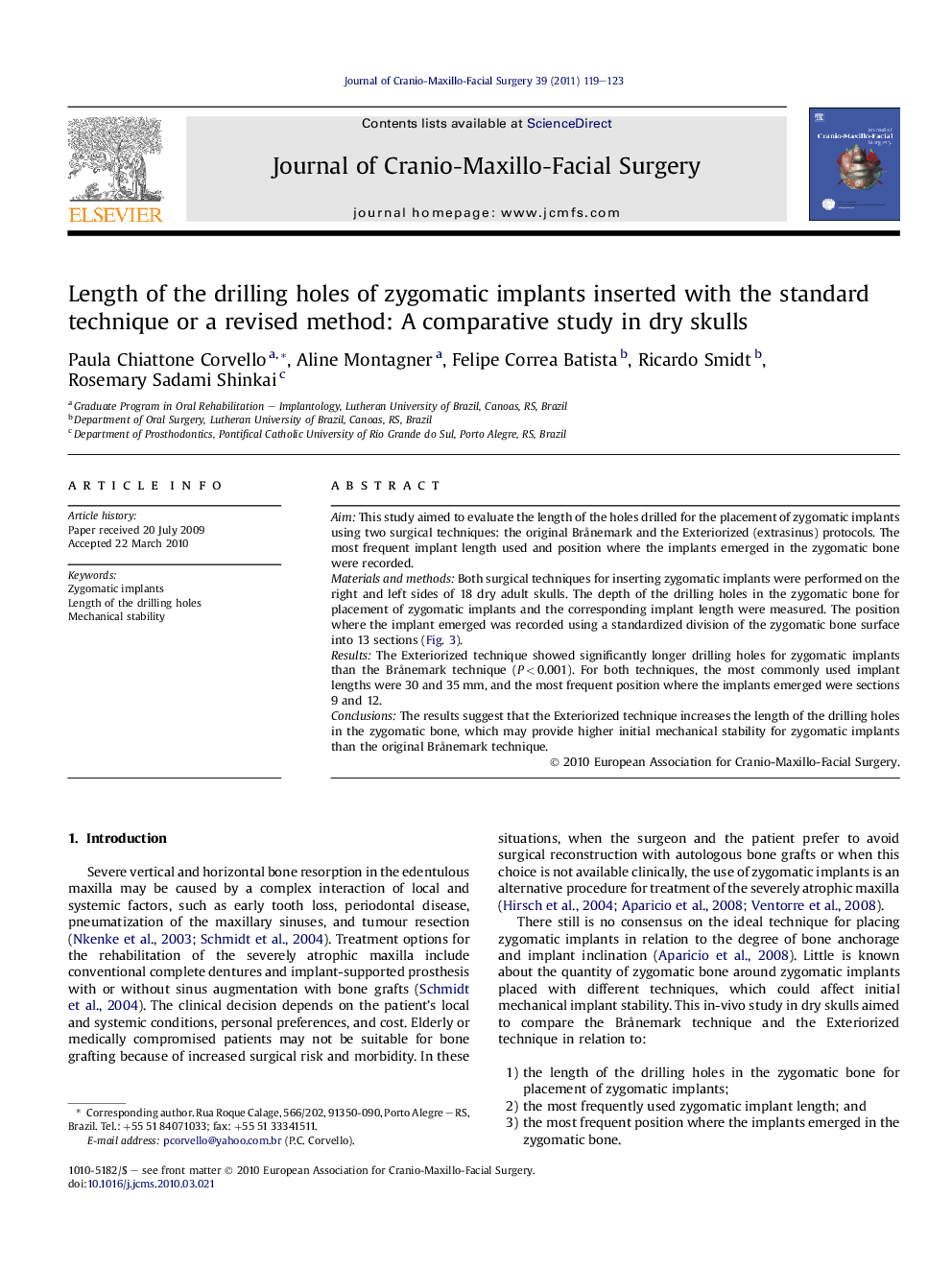| Article ID | Journal | Published Year | Pages | File Type |
|---|---|---|---|---|
| 3143977 | Journal of Cranio-Maxillofacial Surgery | 2011 | 5 Pages |
AimThis study aimed to evaluate the length of the holes drilled for the placement of zygomatic implants using two surgical techniques: the original Brånemark and the Exteriorized (extrasinus) protocols. The most frequent implant length used and position where the implants emerged in the zygomatic bone were recorded.Materials and methodsBoth surgical techniques for inserting zygomatic implants were performed on the right and left sides of 18 dry adult skulls. The depth of the drilling holes in the zygomatic bone for placement of zygomatic implants and the corresponding implant length were measured. The position where the implant emerged was recorded using a standardized division of the zygomatic bone surface into 13 sections (Fig. 3).ResultsThe Exteriorized technique showed significantly longer drilling holes for zygomatic implants than the Brånemark technique (P < 0.001). For both techniques, the most commonly used implant lengths were 30 and 35 mm, and the most frequent position where the implants emerged were sections 9 and 12.ConclusionsThe results suggest that the Exteriorized technique increases the length of the drilling holes in the zygomatic bone, which may provide higher initial mechanical stability for zygomatic implants than the original Brånemark technique.
